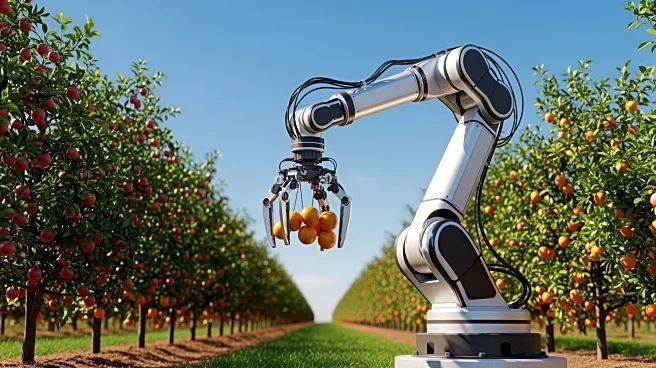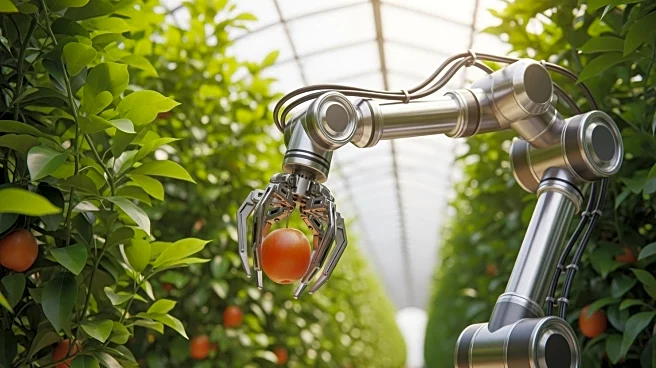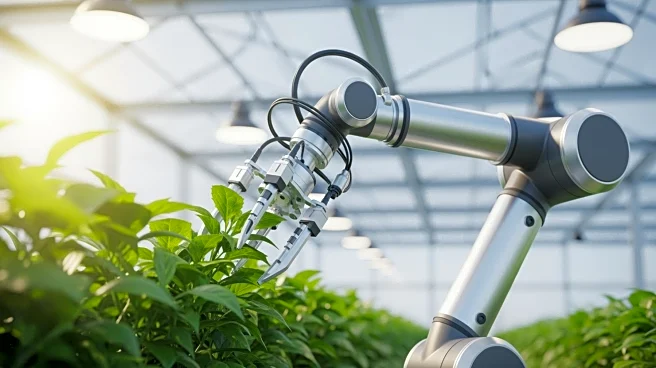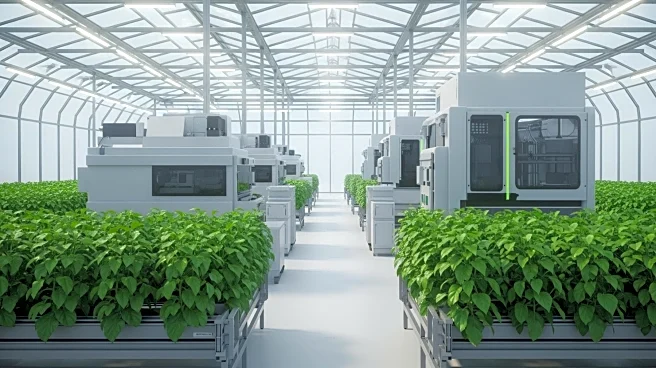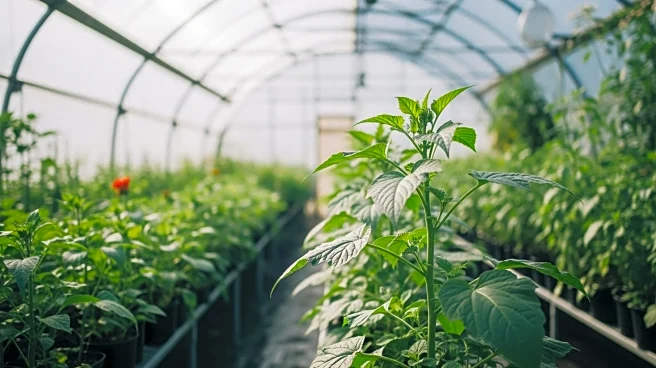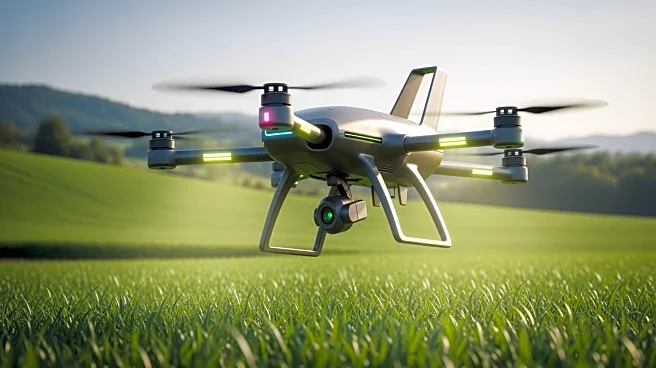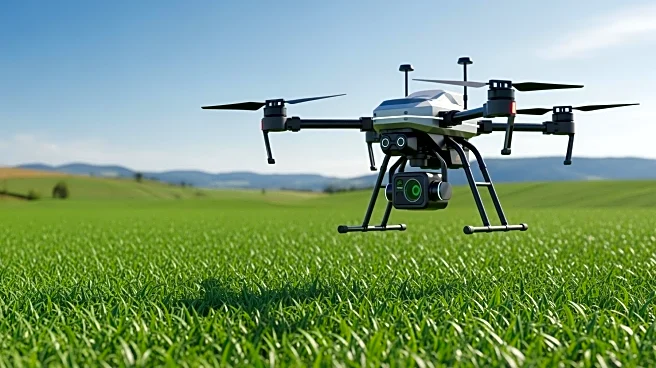What's Happening?
Farmers in California are increasingly adopting robotic technology to address labor shortages exacerbated by immigration raids. These raids have instilled fear among field workers, with reports indicating
that up to 70% of them are too scared to report to work. This labor shortage poses a significant risk to harvests, prompting farmers to seek technological solutions to maintain productivity. The shift towards automation is seen as a necessary adaptation to ensure the continuity of agricultural operations in the face of dwindling human labor resources.
Why It's Important?
The move towards robotics in agriculture highlights a critical intersection of immigration policy and technological advancement. As immigration enforcement intensifies, the agricultural sector, heavily reliant on immigrant labor, faces operational challenges. The adoption of robotics could mitigate some of these challenges, but it also raises questions about the future of labor in agriculture. While technology may offer a solution to labor shortages, it could also lead to job displacement for workers who rely on these positions. This development underscores the need for balanced policies that address both labor needs and immigration concerns.
What's Next?
As farmers continue to integrate robotics into their operations, there may be increased investment in agricultural technology. This could lead to innovations that further transform farming practices. However, the broader implications for the labor market and immigration policy remain uncertain. Stakeholders, including policymakers and industry leaders, may need to engage in discussions to address the long-term impacts of automation on employment and immigration.
